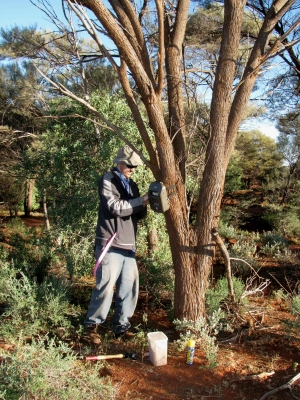Give predators a chance
Research news
The idea of living alongside large predators such as sharks, lions or leopards may have people quaking in their boots, but it’s time for a reality check, argues Deakin University’s Dr Euan Ritchie.
In fact, research shows that large predators are of crucial importance to the environment and - for our own sakes, as much as theirs - it is time that we learned to live with them.
In a paper published in one of the world’s leading science journals, ‘Science’, Dr Ritchie and 11 colleagues from universities in Australia, Europe and the USA show the real plight of the world’s largest carnivores, as well as their crucial ecological importance and our interdependence with them.
The project, which analysed the 31 largest mammalian carnivore species, shows how threats, such as habitat loss, persecution by humans and loss of prey, have created “global hotspots” of carnivore decline, particularly in areas of southeast Asia, southern and East Africa, and the Amazon, where multiple species are declining.
The research shows that more than 75 per cent of the remaining large-carnivore species are declining, with 17 species now occupying less than half of their former ranges.
“Unless we put appropriate measures in place, many of these species face a significant risk of extinction in the coming few decades, and in some cases, such as the Ethiopian wolf, perhaps even earlier,” Dr Ritchie says.
A senior lecturer within Deakin’s Centre for Integrative Ecology, Dr Ritchie and his colleagues are calling for an international initiative that aims to conserve large predators in coexistence with people. They point to the “Large Carnivore Initiative for Europe” as a potential model for such a move.
“It is possible to live alongside predators,” Dr Ritchie says. “In the case of sharks, for example, which now face a government order to be culled in certain areas of Western Australia, we can do practical things to minimise our risk of shark attack, such as not swimming alone or at certain times of the day. But we really must put this risk into perspective.
“More people die annually in Australia as a result of bee stings, lightning strikes and horse riding accidents, among others. So death via a large predator is an incredibly unlikely event.”
While Dr Ritchie and his colleagues argue that the predators have an “intrinsic right to exist”, they claim that humans have a “vested interest” in their protection. Effects of loss of predators cascade across ecosystems, with changes in bird, mammal, invertebrate and vegetation levels, as well as altered disease dynamics, erosion, potential crop, biodiversity and other environmental damage.
The researchers singled out seven species that have particularly widespread ecological effects, including the Australian dingo (the sole remaining native top mammalian predator in Australia), African lions, leopards, Eurasian lynx, cougars, gray wolves and sea otters.
“The loss of dingoes has contributed to the extinction and/or endangerment of small marsupials and rodents over much of Australia,” Dr Ritchie says.
“We need to learn to live with these animals because we depend on them. This is a crucial challenge that will determine their fate, as well as all that depends on them, including us.”
Share this story
 Dr Euan Ritchie from Deakin’s Centre for Integrative Ecology.
Dr Euan Ritchie from Deakin’s Centre for Integrative Ecology.
